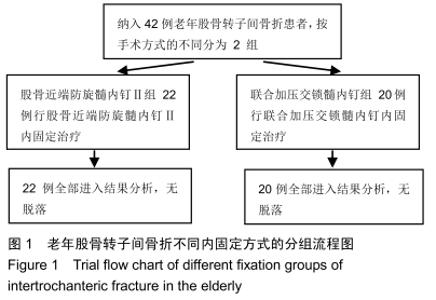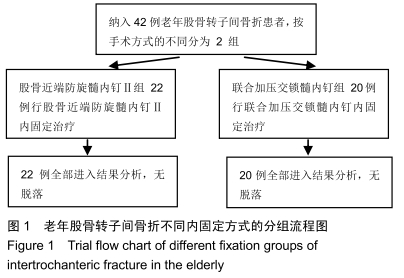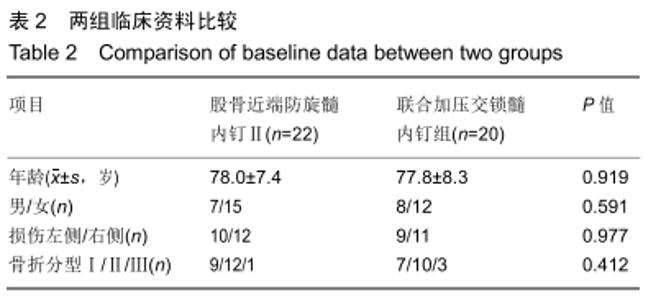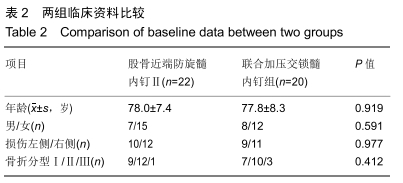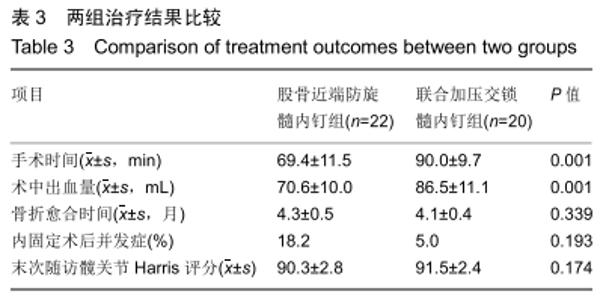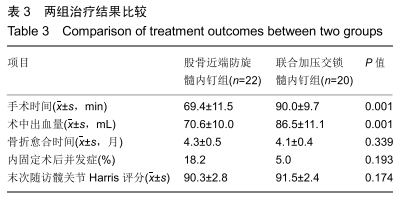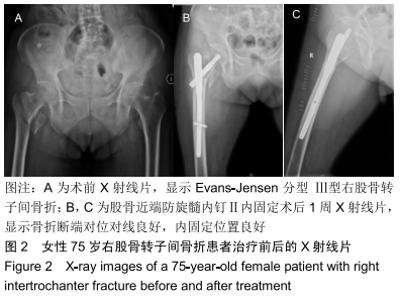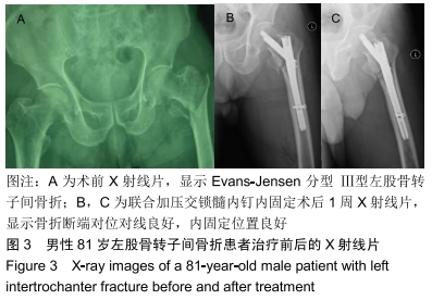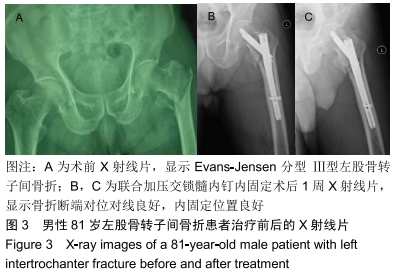[1] BHANDARI M, SWIONTKOWSKI M. Management of Acute Hip Fracture. N Engl J Med. 2017;377(21):2053-2062.
[2] SADIC S, CUSTOVIC S, JASAREVUC M, et al. Proximal Femoral Nail Antirotation in Treatment of Intertrochanteric Hip Fractures: a Retrospective Study in 113 Patients. Medical Archives. 2015; 69(6): 352-356.
[3] SOCCI AR, CASEMYR NE, LESLIE MP, et al. Implant options for the treatment of intertrochanteric fractures of the hip: rationale, evidence, and recommendations. Bone Joint J. 2017;99-B(1): 128-133.
[4] SAMBANDAM SN, CHANDRASEKHARAN J, MOUNASAMY V, et al. Intertrochanteric fractures: a review of fixation methods. Eur J Orthop Surg Traumatol.2016;26(4):339-353.
[5] ROBERTS KC, BROX WT, JEVSEVAR DS, et al. Management of hip fractures in the elderly. J Am Acad Orthop Surg. 2015;23(2): 131-137.
[6] SANDERS D, BRYANT D, TIESZER C, et al. A Multicenter Randomized Control Trial Comparing a Novel Intramedullary Device (InterTAN) Versus Conventional Treatment (Sliding Hip Screw) of Geriatric Hip Fractures.J Orthop Trauma.2017;31(1):1-8.
[7] ZENG X, ZHANG N, ZENG D, et al. Proximal femoral nail antirotation versus dynamic hip screw fixation for treatment of osteoporotic type 31-A1 intertrochanteric femoral fractures in elderly patients.J Int Med Res.2017;45(3): 1109-1123.
[8] 胡炳炎,艾金伟,陈琼,等.系统评价和Meta分析股骨近端髓内钉与防旋型股骨近端髓内钉治疗股骨转子间骨折的差异[J].中国组织工程研究, 2016,20(53):8010-8021.
[9] PU JS, LIU L, WANG GL, et al. Results of the proximal femoral nail antirotation (PFNA) in elderly Chinese patients.Int Orthop. 2009; 33(5):1441-1444.
[10] CHANG SM, SONG DL, MA Z, et al. Mismatch of the short straight cephalomedullary nail (PFNA-II) with the anterior bow of the femur in an Asian population.J Orthop Trauma.2014;28(1):17-22.
[11] JENSEN JS. Classification of trochanteric fractures. Acta Orthop Scand. 1980;51(5): 803-810.
[12] HARRIS WH. Traumatic arthritis of the hip after dislocation and acetabular fractures: treatment by mold arthroplast. An end-result study using a new method of result evaluation. J Bone Joint Surg Am. 1969;51(4): 737-755.
[13] TUCKER A, DONNELLY KJ, MCDONALD S, et al. The changing face of fractures of the hip in Northern Ireland: a 15-year review. Bone Joint J. 2017;99-B(9):1223-1231.
[14] CHATTERTON BD, MOORES TS, AHMAD S, et al. Cause of death and factors associated with early in-hospital mortality after hip fracture. Bone Joint J. 2015;97-B(2): 246-251.
[15] EVANIEW N, BHANDARI M. Cochrane in CORR: Intramedullary nails for extracapsular hip fractures in adults (review). Clin Orthop Relat Res. 2015;473(3):767-774.
[16] ZHANG S, ZHANG K, JIA Y, et al. InterTan nail versus Proximal Femoral Nail Antirotation-Asia in the treatment of unstable trochanteric fractures. Orthopedics.2013;36(3):e288-294.
[17] YANG X, WU Q, WANG X. Investigation of perioperative hidden blood loss of unstable intertrochanteric fracture in the elderly treated with different intramedullary fixations. Injury.2017;48(8):1848-1852.
[18] NESS PM, FRANK SM. Enhancing patient blood management: a long-term FOCUS.Lancet. 2015;385(9974):1157-1159.
[19] STERN R, LÜBBEKE A, SUVA D, et al. Prospective randomised study comparing screw versus helical blade in the treatment of low-energy trochanteric fractures. Int Orthop. 2011;35(12): 1855-1861.
[20] SHIN YS, CHAE JE, KANG TW, et al. Prospective randomized study comparing two cephalomedullary nails for elderly intertrochanteric fractures:Zimmer Natural nail versus proximal femoral nail antirotation II. Injury. 2017;48(7): 1550-1557.
[21] SAWAGUCHI T, SAKAGOSHI D, SHIMA Y, et al. Do design adaptations of a trochanteric nail make sense for Asian patients? Results of a multicenter study of the PFNA-II in Japan. Injury. 2014; 45(10):1624-1631.
[22] ZHANG S, ZHANG K, WANG Y, et al. Using Three-Dimensional Computational Modeling to Compare the Geometrical Fitness of Two Kinds of Proximal Femoral Intramedullary Nail for Chinese Femur. ScientificWorldJournal. 2013;(2013):978485.
[23] SANTONI BG, NAYAK AN, COOPER SA, et al. Comparison of Femoral Head Rotation and Varus Collapse Between a Single Lag Screw and Integrated Dual Screw Intertrochanteric Hip Fracture Fixation Device Using a Cadaveric Hemi-Pelvis Biomechanical Model. J Orthop Trauma.2016;30(4):164-169.
[24] BUFORD WJ, TURNBOW BJ, GUGALA Z, et al. Three-dimensional computed tomography-based modeling of sagittal cadaveric femoral bowing and implications for intramedullary nailing.J Orthop Trauma. 2014; 28(1):10-16.
[25] 陈健,左才红,张财义,等.解剖型髓内钉和股骨近端防旋髓内钉治疗老年股骨转子间骨折的疗效比较[J].北京大学学报(医学版), 2019,51(2):283-287.
[26] TANTIGATE D, RIANSUWAN K, MAHAISAVARIYA B, et al. Breakage of a Lag Screw of Cephalomedullary Nail: A Technique of Removal. Clin Orthop Surg.2015;7(2):261-263.
[27] ZHENG XL, PARK YC, KIM S, et al. Removal of a broken trigen intertan intertrochanteric antegrade nail.Injury.2017;48(2):557-559.
[28] 丁露,李也冉,张政,等.组配式S-ROM型人工关节假体全髋关节置换术治疗股骨转子间骨折内固定失效[J].中华创伤骨科杂志, 2017,19(5): 446-449.
[29] SMITH A, DENEHY K, ONG KL, et al. Total hip arthroplasty following failed intertrochanteric hip fracture fixation treated with a cephalomedullary nail. Bone Joint J. 019;101-B(6_Supple_B):91-96.
[30] Foss NB, Kehlet H. Hidden blood loss after surgery for hip fracture. J Bone Joint Surg Br.2006;88(8):1053-1059.
[31] HOU G, ZHOU F, TIAN Y, et al. Predicting the need for blood transfusions in elderly patients with pertrochanteric femoral fractures. Injury. 2014;45(12):1932-1937.
[32] 王跃辉,邹士平,陈宾,等.生物型加长柄半髋关节置换治疗高龄粉碎性股骨转子间骨折[J].中华创伤骨科杂志, 2018,20(3):267-270.
[33] XUE D, YU J, ZHENG Q, et al. The treatment strategies of intertrochanteric fractures nonunion: An experience of 23 nonunion patients. Injury.2017;48(3):708-714.
[34] HAIDUKEWYCH GJ, BERRY DJ. Hip arthroplasty for salvage of failed treatment of intertrochanteric hip fractures.J Bone Joint Surg Am. 2003; 85(5):899-904.
|
